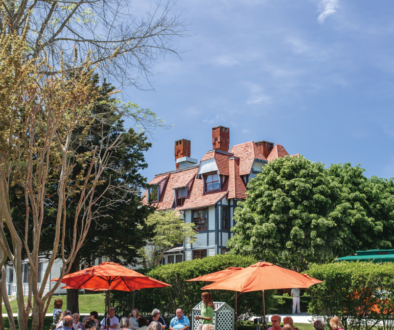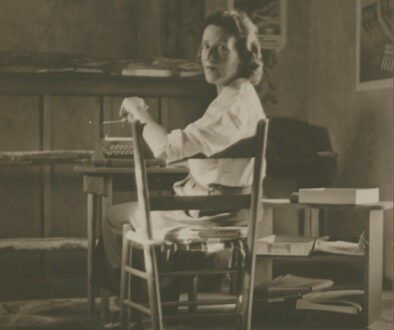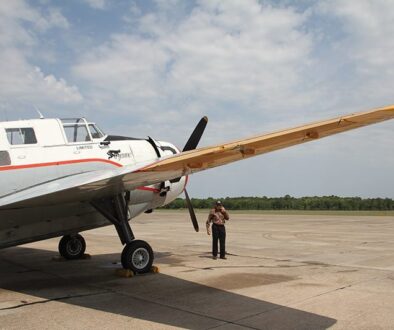The View from Here
People like to go to the top of things. Don’t ask me why. And it’s no good asking them, either, because they don’t know. Nearly a century ago, a reporter from the New York Times asked George Mallory why he wanted to go to the summit of Mount Everest, and he famously answered, “Because it’s there.” (Mallory’s frozen corpse was found on Everest 75 years later.)
It’s an old craving, of course. In the book of Genesis, some people wanted to build a tower “whose top is in the heavens,” but for reasons not well explained the project displeased the Lord, who forcibly scattered the builders. In Dubai, people flock to the top of the Burj Khalifa. At more than half a mile high (2,722 feet), it’s the world’s tallest building. They spend up to $80 per person for the privilege, which is especially odd since—take it from me, I’ve been there—the only thing worth seeing in Dubai is the Burj Khalifa, and you can’t see it when you’re in it.
Until the era of hot-air balloons and airplanes, of course, you couldn’t get a bird’s-eye view of anything. Today, the lowliest of us can achieve breathtaking views of sights that all the princes and potentates of yesteryear could only dream about. Aboard regular commercial flights, I’ve soared above the Grand Canyon, the glaciers of Greenland, and the gorgeous coast of Vietnam near Hue, where countless hundreds of circular pools along the beach capture the oranges and reds of the setting sun—beautiful until you realize that each one is a bomb crater created by American ordnance. As Judy Collins sang, “I’ve looked at clouds from both sides now.”



And then I was asked to take a hike—literally, up to the top of the iconic and much-photographed Cape May Lighthouse. Having lived year-round in Cape May for a while now, I’d never ascended those heights, nor did I have any burning desire to do so. The ocean, it seems to me, looks pretty much like the ocean, whether you’re sitting on the beach drinking a rum punch or looking down on it from a 157-foot tall lighthouse. However, plenty of people don’t agree, as evidenced by the fact that paying customers who climb the lighthouse provide Cape May’s Mid-Atlantic Center for the Arts and Humanities, which leases the lighthouse, with its biggest money-maker by far.
Putting aside my skepticism, one bright morning, with temperatures in the mid-70s and a few high, scattered clouds in a crystalline blue sky, I began my trek.
For those of you thinking about following in my footsteps, let me assure you that it’s a less-than-daunting project. The friendly man downstairs who sold me my ticket—“that’ll be eight dollars”—laughed when I asked him how many steps there were. (I guess he gets asked that a lot.) “I really don’t like to talk about how many steps there are,” he said. “It’s about eight minutes of exercise.” No matter: I’d already read that there are 199 steps. He helpfully added that “every 31 steps” there was a landing where climbers could gather their breath.
Once inside, an original cast-iron spiral staircase swirls around and around above you. At each landing, there are old photographs, maps, and charts with friendly lighthouse facts for your edification and amusement. You’ll see diagrams showing how Cape May Point has been encroached upon by the ocean, and how long-gone South Cape May eventually fell victim to the waves. And even if you’re only slightly winded, you can pretend to be absolutely riveted by the information therein—while you huff and puff. But really, unless you are grossly overweight —a not-uncommon condition in a state where deep-fried Oreos exist—you aren’t likely to tax your stamina overmuch.




At one landing, a placard reveals that the rest areas were built into the original design to accommodate the original lighthouse keepers. “Landings were probably necessary to give the keeper a rest as he climbed the tower,” it tells us. That made me think that nineteenth-century lighthouse men were sadly out of shape—until I learned, later on, that in the old days they had to lug extremely heavy and cumbersome containers of whale oil to the top, back in the days before electricity.
(The current lighthouse was first lit in 1859.)
Spiraling upwards, at the top you’ll enter a beautifully restored circular room, enclosed in warm, stained-wood wainscoting. “It’s called the watch gallery,” said Perry Buckley, whose name badge read “Lighthouse Keeper” and who’s worked at the lighthouse for MAC since 2000. “A lot of people think that the lighthouse keepers lived up here,” says Buckley. “They didn’t. They lived on the ground.” Above the watch gallery are the rotating lights, with light bulbs that cost $240 each, making a full round trip precisely every 30 seconds. Pretty much everything up there is original, he says, and it’s been lovingly cared for. Buckley enjoys answering questions from those who’ve made the climb, and there’s a sign-in guest book—he shows one page filled with names of people from China, Singapore, and other far-off points of origin. And in a drawer he maintains a special registry in which people who’ve come to Cape May to be married inscribe lengthy passages about their hopes and dreams—and for those who’ve proposed to their would-be spouses at the top of the lighthouse.
Stepping through a breezy doorway, you find yourself on the circular gangplank that goes all the way ‘round, providing 360-degree views of, well, Cape May. It’s safer than safe: the original, waist-high steel railing is still here, but the current management has installed what they call a “birdcage,” making it impossible for even the most rambunctious child to endanger himself or herself. Off in the distance is the coast of Delaware, the bay, and, in the other direction, the rooftops of Cape May City. Directly below are the homes of Cape May Point, St. Mary’s by the Sea retreat center, the old, abandoned World War II concrete bunker, and the Nature Conservancy’s South Cape May Meadows, a nature preserve and birder’s mecca.
I decided to ask Buckley if he often has to deal with people who’ve had trouble climbing the steps. It’s very rare, he says. But, just in case, he keeps a first-aid kit and bottles of water in a cabinet.
As I started down the steps, though, I began to feel a little guilty, like I hadn’t really experienced the physical challenge of the climb because I’d stopped all along on the way up to read the placards and study the old photos. So I asked Buckley how long it takes to make the ascent, without stopping, at a steady pace. “For most people,” he said, “it’s about six or seven minutes.” Well, I was certainly going to test that. Back at the bottom, I pulled out my phone, set the stopwatch, and hit “start.” Up I went, around and around, with perhaps two or three five-second pauses to catch my breath. Back at the top, Buckley asked, “How long?” I showed him my stopwatch. “Two minutes and fifty-seven seconds,” I said.
He smiled. “Don’t put that in the article. People will start trying to beat your record.” Feel free. It’s easier than it looks.



